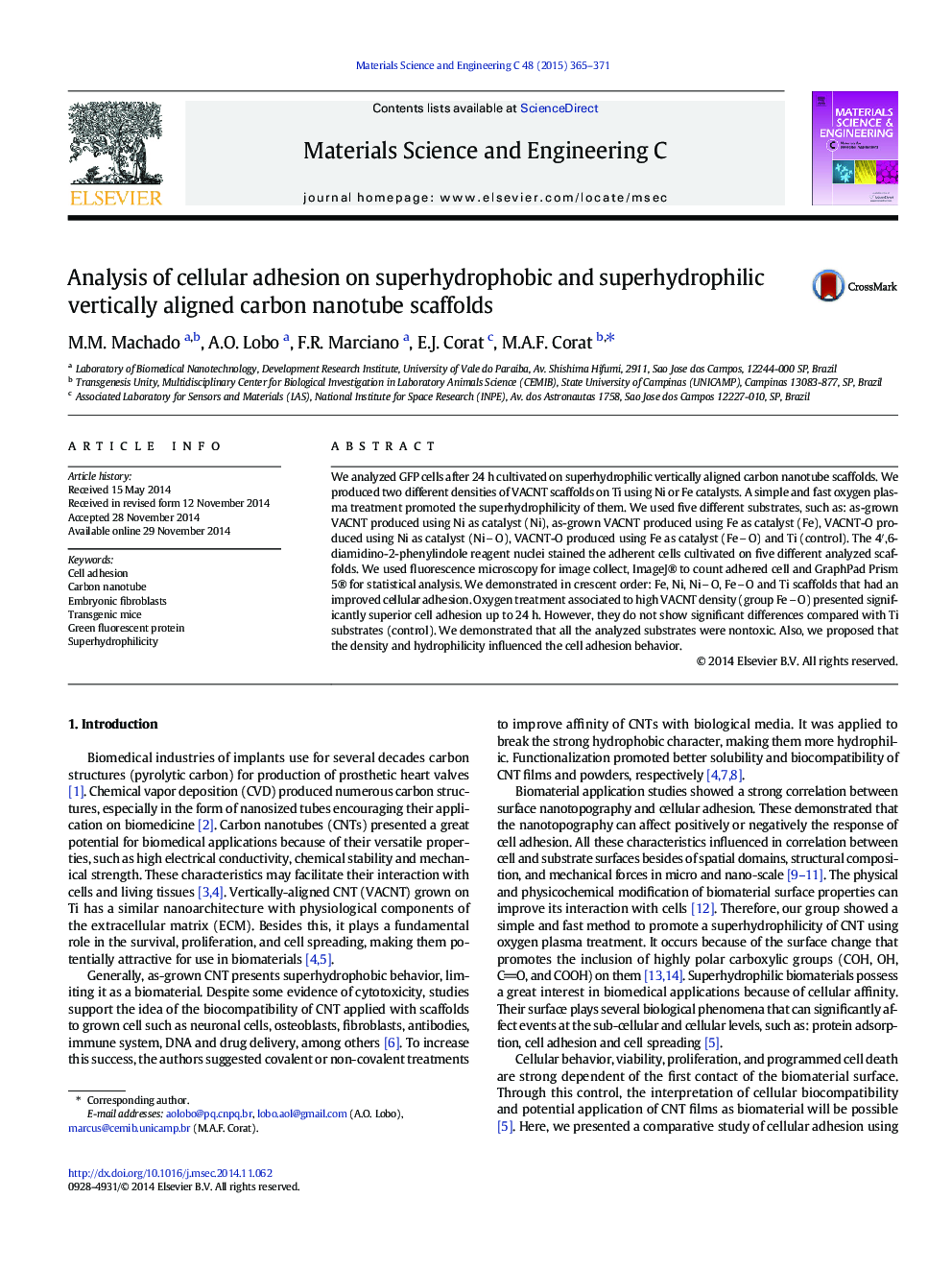| Article ID | Journal | Published Year | Pages | File Type |
|---|---|---|---|---|
| 1428468 | Materials Science and Engineering: C | 2015 | 7 Pages |
•We produced aligned superhydrophobic and superhydrophilic carbon nanotube forests.•Hydrophobic substrates have no cytotoxic effects.•We proposed that the density and hydrophilicity influenced the cell adhesion behavior.
We analyzed GFP cells after 24 h cultivated on superhydrophilic vertically aligned carbon nanotube scaffolds. We produced two different densities of VACNT scaffolds on Ti using Ni or Fe catalysts. A simple and fast oxygen plasma treatment promoted the superhydrophilicity of them. We used five different substrates, such as: as-grown VACNT produced using Ni as catalyst (Ni), as-grown VACNT produced using Fe as catalyst (Fe), VACNT-O produced using Ni as catalyst (NiO), VACNT-O produced using Fe as catalyst (FeO) and Ti (control). The 4′,6-diamidino-2-phenylindole reagent nuclei stained the adherent cells cultivated on five different analyzed scaffolds. We used fluorescence microscopy for image collect, ImageJ® to count adhered cell and GraphPad Prism 5® for statistical analysis. We demonstrated in crescent order: Fe, Ni, NiO, FeO and Ti scaffolds that had an improved cellular adhesion. Oxygen treatment associated to high VACNT density (group FeO) presented significantly superior cell adhesion up to 24 h. However, they do not show significant differences compared with Ti substrates (control). We demonstrated that all the analyzed substrates were nontoxic. Also, we proposed that the density and hydrophilicity influenced the cell adhesion behavior.
Graphical abstractFigure optionsDownload full-size imageDownload as PowerPoint slide
